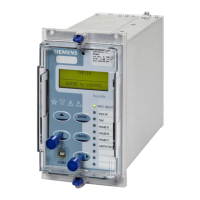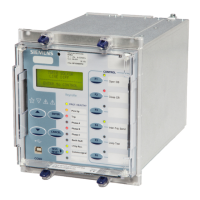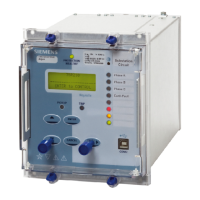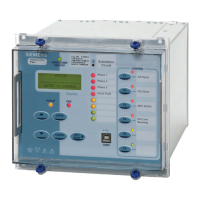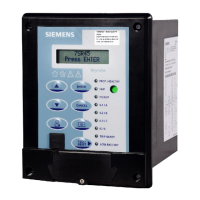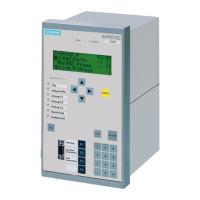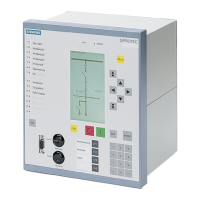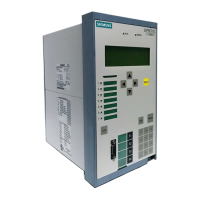7SR105 Rho and 7SR17 Rho Applications Guide
©2018 Siemens Protection Devices Chapter 7 Page 13 of 31
field created by the rotor. This induces double-frequency currents into the rotor which cause very large eddy
currents in the rotor body. The resulting heating of the rotor can be severe and is proportional to (I
2
)
2
t.
Note that a 1% voltage unbalance typically translates into a 6% current unbalance. In order to prevent nuisance
trips the pick-up level should not be set too low but, as current unbalance can cause serious rotor overheating the
motor manufacturers recommendation as to the maximum allowable unbalance or negative sequence should be
set.
The NPS withstand figure quoted by the motor manufacturer shall be used where available. Magnitude difference
protection should be selected where harmonics are present.
2.2 Setting Example - Thermal Protection
MOTOR
100/1A
Motor Rating Plate Data
Rated output 400kW CMR
Rated Voltage 3.3kV
Rated Frequency 50Hz
Rated Power Factor 0.85
Rated Efficiency 95.5%
Service Factor NA
Stall Withstand Time 11 secs (cold)
7 secs (hot)
Starting Method Direct-On-Line
Locked Rotor Current 5 x Full Load
Permitted starts cold/hot 2 per hour (hot)
N.A. (cold)
Start Time @ 100% Voltage 4 sec
Min. Time Between Starts NA
Control Device Vacuum circuit breaker
Figure 2.2-1 Setting Example – Motor Circuit Data
The motor full load current (FLC) and start current can be calculated:-
Amps86.3
3.33
493
kV3
KVA
currentloadFull
KVA493
0.9550.85
400
efficiencyP.F.
Output
powerInput
=
×
==
=
×
=
×
=
CT secondary FLC is:
)86.0(86.0
100
13.86
InA
RatioCT
MotorFLC
×==
×
=
Motor starting current can be taken to be the same as the locked rotor current, the motor start CT secondary
current is:
5 x 0.86 = 4.3A (= 4.3 x In)

